UK retailers have tried in vain to make refillable aisles land with shoppers. So what can they learn from the success of other countries?
It feels like UK supermarkets are slightly stuck when it comes to scaling up their refillable concepts.
Earlier this month, Lidl quietly ended a three-store pilot of laundry detergent refill machines. In July, ‘operational issues and commercial challenges’ saw Asda draw an end to its four-year trial of refill stores, which had allowed shoppers to stock up on essentials including tea, coffee, rice and pasta at in-store refillable stations. And Morrisons, M&S and Tesco too have all canned their own trials of refill aisles in recent years, citing lack of appetite, impact on store environment or economic barriers.
And though nearly all the major grocers insist reuse and refill remain high on their to-do list – Lidl, for one, branded its trial a success, garnering “extremely encouraging results” – it does feel like they’ve hit a bit of a roadblock.
The consumer demand is absolutely there in the UK, believes Celine Deschamps, marketing manager at refill campaign group City to Sea. “We’ve been monitoring consumer perception of refill for six, seven years, and now more than ever people are concerned about plastic pollution and they’re ready to take action.”
The various supermarket trials too have been of “immense value and bring invaluable insights”. But creating “widely accessible refill options” at sufficient scale and with the necessary “supporting infrastructure” to deliver the commensurate consumer uptake remains a hurdle UK grocers can’t overcome.
Perhaps it’s time the industry looked a little further afield for inspiration then. The UK, after all, is by no means alone when it comes to pushing hard for reusable concepts in consumer goods. From Latin America’s track record on refillable soft drinks, to India’s 134-year-old dabbawalas network delivering lunch in reusable containers, and France’s regulatory crackdown on single-use in supermarkets, the world is a hubbub of activity when it comes to refill and reuse right now.
So, how does progress in some of these countries compare with the UK? What have they got right? And what might UK CEOs learn from their example?
Cracking the code
First, the bad news. No single country has completely cracked refill.
Of the 82 countries analysed from 1999 to 2019 by circular economy specialists Reloop, only four had increased the market share for refillable containers, for example. Though the total volume of refillable units sold had increased during that 20-year timeframe, this was eclipsed by surging volumes of single-use plastic. Across the 10 countries with the highest rates of refillable containers (the UK is not among them), single-use PET containers actually outsold refillable for the first time, on average, around 10 years ago.
It’s also a bit of a minefield drawing like-for-like global comparisons, points out Catherine Conway, director and reuse lead at consultancy GoUnpackaged. “It’s very different to talk about refill in-store, where someone’s coming with their own packaging and filling up out of a hopper, compared to a takeaway place in Europe where you can get your lunch in a reusable dish,” she says. “There are all of these different areas and ways in which you could approach reuse and refill, and certain markets are doing better on some aspects than others, but there isn’t one that’s homogeneously doing better [on all areas] compared to others.”
The definitions of refill and reuse are also a bit of a “moving feast”, agrees Deschamps. “We tend to use ‘reuse’ as the common term, or the umbrella term, to encompass all kinds of initiatives.”
These caveats aside, though, there are pockets of activity in countries around the world from which the UK could arguably stand to learn a lot.
Five countries aiming to make reuse and refill mandatory
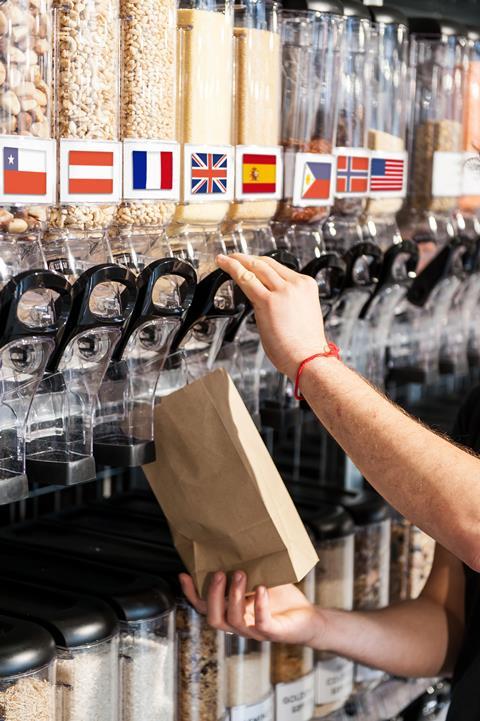
Austria
In November 2020, Austria introduced binding targets for refillable drinks packaging – the first European country to take such a step.
Introduced as part of a new national waste management law, the government set binding quotas for the proportion of reusable packaging sold in retail, starting with a requirement of 25% in 2025 and increasing to at least 30% by 2030.
Chile
In what was hailed as a world first, in 2021 the Chilean government set out its plan to eliminate all single-use food and drink products within three years.
The policy goes beyond simply single-use plastic, to incorporate all other single-use packaging materials too. The policy includes a requirement that at least 30% of bottled drinks in supermarkets must come in reusable bottles.
France
In 2021, the French government introduced legislation that requires all large supermarkets (400m2 or bigger) to install refill systems.
By 2030, one-fifth of their shop floor space must be occupied by stations that allow customers to bring their own container or bag and fill up with essentials like pasta, nuts or rice. It forms part of wider efforts in the European country to phase out single-use plastic packaging by 2040.
Spain
Though still making its way through various approval stages, Spain has drafted a national decree that would see it create quotas within hospitality for reusable water, beer, juices and soft drinks.
The decree also includes a number of measures designed to promote bulk sales and the use of reusable packaging by retailers, as part of an overarching ambition to make all packaging recyclable by 2030.
Philippines
In 2023, the Filipino government began taking action to address plastic’s pervasiveness, rolling out ambitious laws on EPR.
The policy includes a requirement for companies with at least 100 million pesos ($1.7m) in assets to recover 20% of the plastic waste that remains after their products are used by consumers through recycling, upcycling or waste-to-energy conversion.
You don’t have to travel too far to find them either. French grocers are scaling up far faster than in the UK, in part thanks to a national law introduced in 2021.
The legislation requires all large supermarkets (400m2 or bigger) to install refill systems in the coming years, with 20% of their shop floor space set to be occupied by stations that allow customers to bring their own container or bag and fill up with essentials. Though there are still six years until the deadline, the change in law has compelled market leaders such as Carrefour and Leclerc to overhaul their approach at pace.
The law has already made a material difference, says Conway. “I have been over to France, and I’ve been to industry meetings, and it has gone from a discussion about why we should do this, or should we do this at all, to how are we going to do it and how are we all going to work together to standardise this,” she says.
Several thousand miles away, the Chilean government has taken a similar stance. Also in 2021, authorities passed a law that not only requires food stores to “actively display, sell, and receive refillable bottles”, but also imposed an effective ban on many single-use plastic food containers. The ambitious target triggered a wave of investment in in-store innovation, with domestic tech startup Algramo closing a $7.3m investment round the same year to expand its automated refill systems in Chile’s convenience stores.
“You’re designing for the market that exists rather than trying to reinvent the wheel”
Hugo Lynch, Abel & Cole
The system allows shoppers to show up with reusable containers – each fitted with a unique RFID tag – and fill them with daily essentials such as shampoo, washing-up liquid and detergent. They can also order refills to their door and pay via a phone app. Crucially, the cost of Agramo products per gram are the same regardless of volume.
To achieve this, “they’ve gone for the lowest barrier to entry” with functional sachet-style packaging, says Hugo Lynch, sustainability project manager at Abel & Cole. “That’s really just savvy design, because you’re looking at consumer behaviour and recognising that price is fundamentally what’s going to make or break a concept in this economy. You’re designing for the market that exists rather than trying to reinvent the wheel.”
Inevitably, change has been fuelled by legislation, which “keeps people’s feet to the fire”, believes Lynch. “You really don’t want to be the first to market if you’re offering something that’s slightly premium, or where there are a lot of financial considerations you have to make. Having legislation in place that says you have to do this, and your competitors have to do this as well, means there’s greater resilience to stick to it.”
Food cultures
Otherwise, it’s embedded food culture and practices that are behind widespread adoption rates. In India for example, Mumbai’s famous network of dabbawalas still deliver steaming hot lunches to hundreds of thousands of office workers each day, a 134-year-old food delivery service that has been dubbed one of the most efficient last-mile logistics systems in the world. Crucially, rather than picking up meals cooked in dark kitchens and packaged up in single-use containers, the dabbawalas pick up home-cooked meals, typically from their customer’s own houses, served in tiffin boxes that are then washed out ready for the following day.
In the Philippines, too, “reuse and refill were part of our traditions and practices in daily life, so it’s not unfamiliar, and the same can be said for many countries in the Global South,” says Marian Ledesma, zero waste campaigner at Greenpeace Philippines.
Significantly, Tingi culture has been followed by Filipinos for generations. This is the practice of buying and trading in precise amounts in sari-sari stores using reusable containers, as a way to minimise cost and cut out waste. In recent years, though, the culture has been co-opted by major consumer goods companies, says Greenpeace, with reusable containers swapped out for single-use sachets.
Local initiatives such as the Kuha sa Tingi project are an attempt to revert back to earlier iterations of the traditional behaviour, explains Ledesma, by introducing small-portion refill systems for everyday commodities at affordable prices in local stores. Such was the success of the pilot that the Quezon City government increased the number of stores offering refills from 20 to 1,000 as of January this year. It’s thought the rollout will collectively avoid 1,066,666 pieces of sachet waste per month.
There are plenty of in-built lessons for the UK in this example, Ledesma believes. Primarily, “bringing back reuse and refill systems that worked before are important to help normalise these alternatives once again”.
Then there are those countries where refill schemes have prioritised convenience and cost incentives.

For example, in Brazil, Venezuela and Argentina, refillable drinks containers are now commonplace in part thanks to a “very strong network of trade channels”, points out Deschamps, with even the smallest corner shop offering the mechanism for returns. “It’s hyper-local and really reduces any friction for people,” she says. In addition, “it’s primarily marketed as a way for people to save money, so it just makes sense to do”.
In Germany, too, collective buy-in from its elaborate network of small beer and mineral water producers – for which a standardised refillable glass unit is simply more cost-effective – has helped deliver the world’s most successful deposit return scheme (DRS).
Created in 2002, Einwegpfand requires all stores selling drinks to take back bottles and return the pfand (deposit) to consumers, of €0.25 for plastic and between €0.08 and €0.15 for glass – a discrepancy designed to incentivise the purchase of refillable glass units as they’re cheaper upfront. The scheme has achieved a 98% return rate for eligible containers, the highest in the world, and prompted major bottlers such as Coca-Cola Europacific Partners (CCEP) to invest in refillable concepts in the European country.
“In total, over the past five years (2019 to 2023), we have invested more than 300 million euros in returnable bottling: in new bottling lines for example in Lüneburg and Mannheim, in new components and returnable containers, the expansion of our returnable bottle pool and new returnable crates,” says Sam Jones, head of climate and sustainability at CCEP.
It’s important to note that no country or initiative is without its pitfalls when it comes to refill, however.
Peek behind the slick cereal and pasta dispensers popping up in French supermarkets, for instance, and you’d find them being filled up by delivery sacks hardly any bigger than those that had sat on shelf only a couple of years ago. “They’re basically powering a reusable front end with a disposable back end,” says Conway. India, meanwhile, might be an early pioneer for ditching single-use lunch containers, but it remains one of the world’s biggest contributors to plastic waste, generating some 10 million tonnes annually.
As Conway points out, “it’s complicated”. Yes, the UK could learn a lot by looking for inspiration on refillable concepts elsewhere in the world. But “no country has cracked this in a market-wide sense,” she says. “There is no country that doesn’t need to do more.”







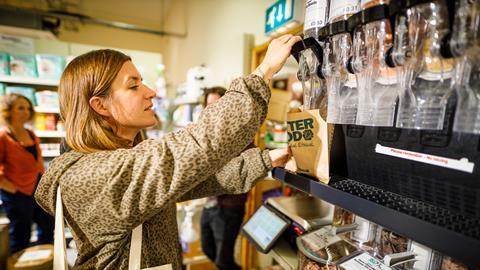

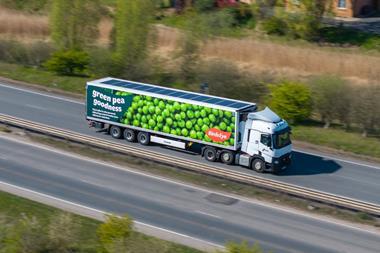
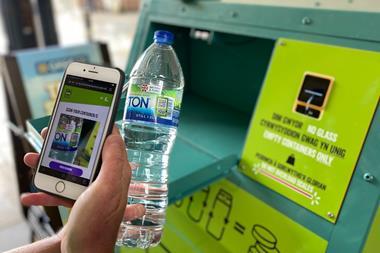
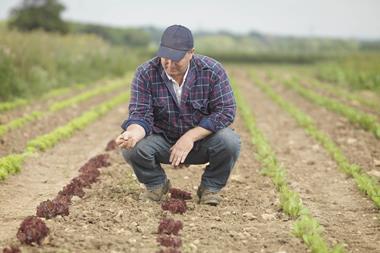
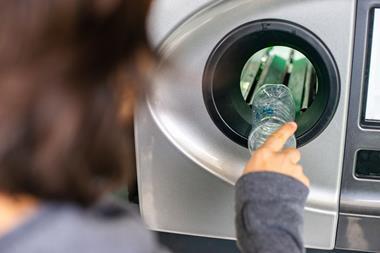

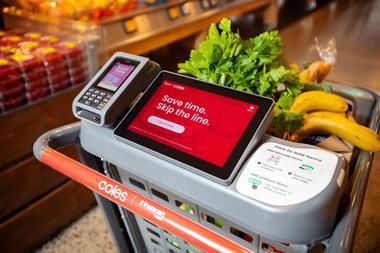





No comments yet